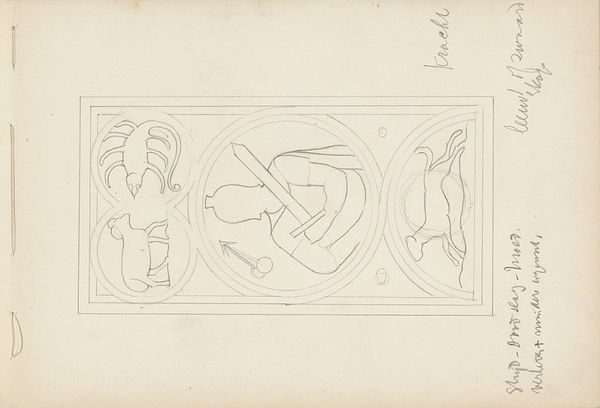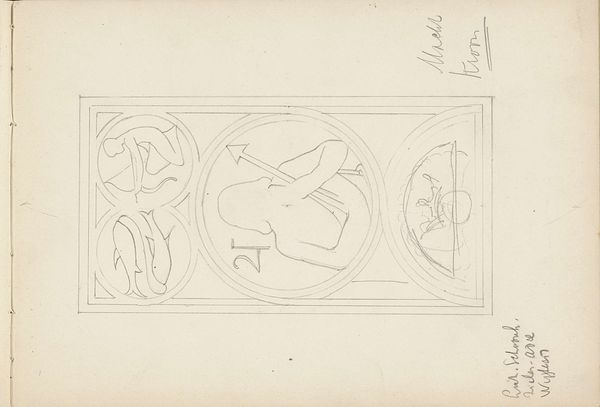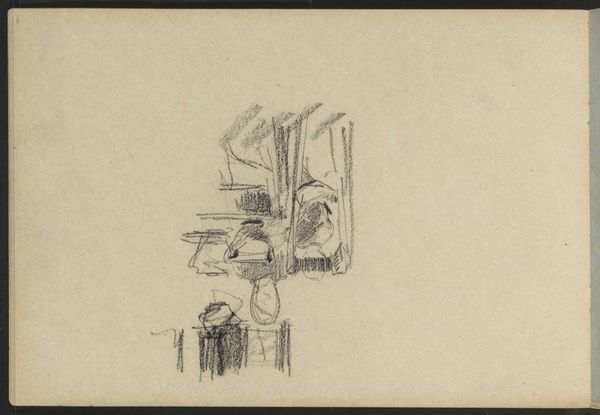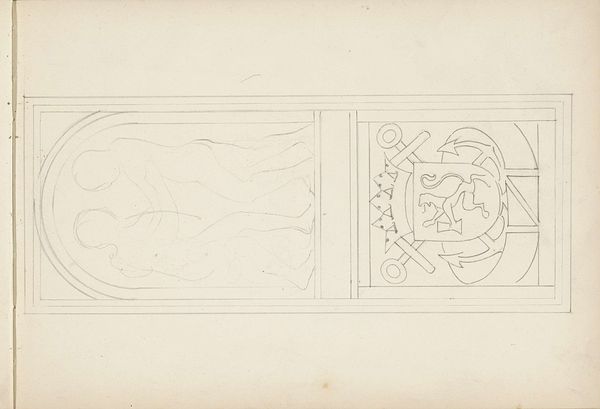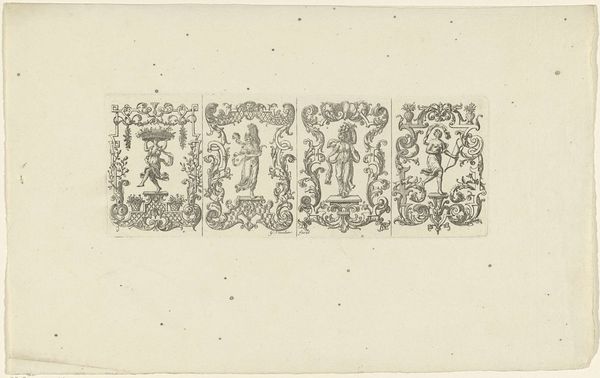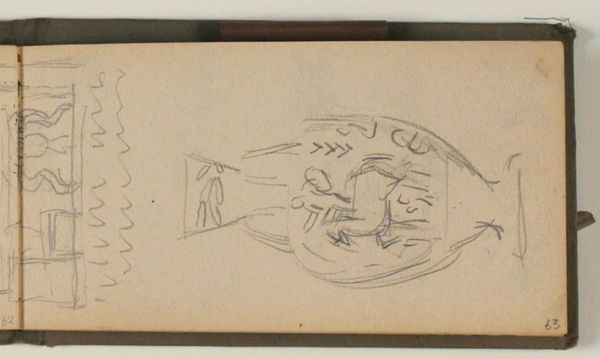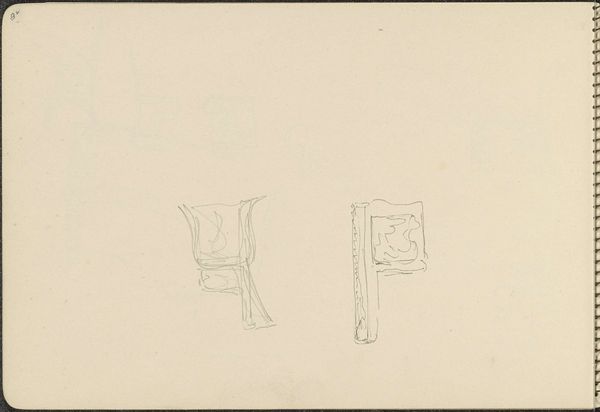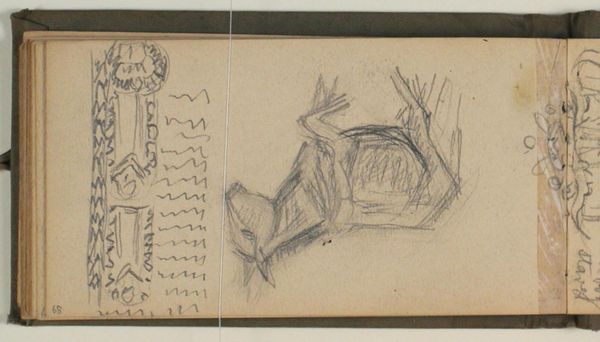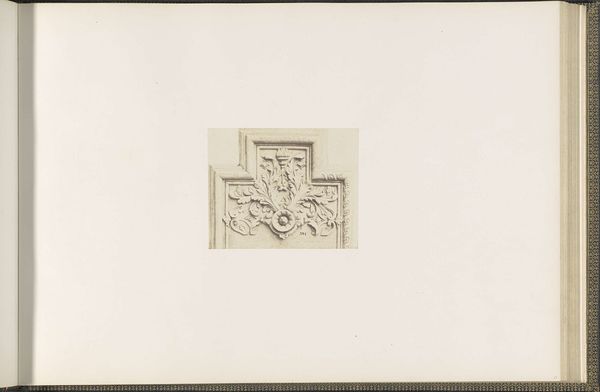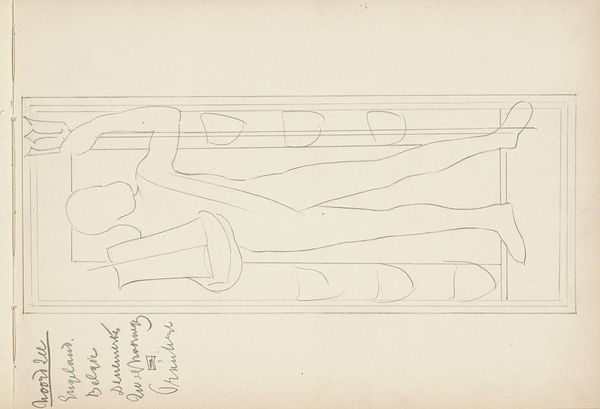
drawing, paper, pencil
#
drawing
#
aged paper
#
toned paper
#
light pencil work
#
old engraving style
#
hand drawn type
#
paper
#
form
#
personal sketchbook
#
ink drawing experimentation
#
geometric
#
pen-ink sketch
#
pencil
#
sketchbook drawing
#
sketchbook art
Copyright: Rijks Museum: Open Domain
Curator: Here we have Julie de Graag's "Ornamentele stierenkop," dating to around 1894. It's currently held here at the Rijksmuseum. Editor: My initial impression is one of delicate transience. It’s almost a ghostly image, faint pencil lines on aged paper evoking a sense of fragility and ephemerality. Curator: It's a page from a sketchbook, done in pencil, perhaps with some ink detailing as well. What's fascinating is the process evident in the sketch itself. It's not a finished piece, but a record of an exploration of form. I would even say that De Graag's labour can be clearly noted in the detail. Editor: Exactly! I am interested to the cultural institutions, at the time, encouraging this type of preliminary design drawing, and how she made use of available materials. The very accessibility of pencil and paper—mass-produced and readily available—allowed for a democratization of artistic practice. Curator: I agree. Consider also how drawing skills played into education. I'd assume that she was taught classical and renaissance principles to begin and we can see that knowledge as a shadow in this piece. This is shown in the overall style and layout. Editor: It also suggests an inherent accessibility and an inherent amateurish sentiment which is not found in larger official works. Curator: It could reflect changing notions of authorship. In the sketch we see, authorship is distributed—a negotiation between tradition, material limitations, and personal experimentation. How are these forces used? Where are they applied? Editor: Ultimately, this piece highlights the value we place on immediacy. Perhaps there's a greater honesty visible within an incomplete study. It's revealing to consider the political forces and artistic movements that helped popularise this drawing type. Curator: It definitely provides a rich glimpse into her creative process, inviting us to consider the act of artistic creation in all its complex materiality and the culture that shaped it. Editor: Absolutely. I came away with a richer picture of not only how she came to work on this drawing, but also the world that nurtured its existence in the first place.
Comments
No comments
Be the first to comment and join the conversation on the ultimate creative platform.
